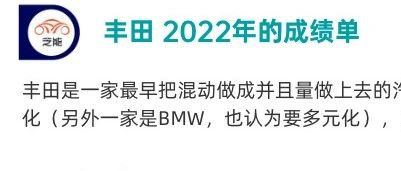Author: Tao Yanyan
After discussing the achievements of the electrification transformation of the German big three (Volkswagen, BMW, and Mercedes-Benz), let’s move on to the Japanese automakers.
Toyota is one of the earliest automakers to produce hybrid cars and achieve large-scale sales. However, it does not believe that the global automotive industry must fully electrify (another automaker with a similar view is BMW, which also believes in diversification). Therefore, when analyzing Toyota’s electrification strategy, hybrid cars must be taken into consideration. Toyota’s sales regions are diversified and not dependent on a single market, which is completely different from the predicament that Volkswagen is in. Therefore, we need to respect Toyota’s own position while also analyzing the significant challenges it faces in developing pure electric vehicles under this strategy.
Here are the basic facts about Toyota:
◎ Toyota’s sales volume in the Chinese market is 1.94 million, a 0.2% decrease compared to the previous year. This is the first year-on-year decline since 2012.
◎ In 2021, Toyota became the best-selling automobile brand in the United States for the first time. In 2022, Toyota’s sales in the United States decreased by 9.6% to 2.108 million (compared to an 8% overall decline in the US automobile market).
◎ In Europe, Toyota’s sales volume increased to 1.081 million in 2022, a growth of 0.9% (compared to an 11% decline in the European automobile market), and its market share increased to 7.3%.
◎ According to data released by the association, Toyota sold 1.2476 million cars in Japan last year, a 12.4% decrease compared to the previous year (the total sales volume of new cars in the Japanese market in 2022 was 4.2 million, a 5.6% decrease compared to the previous year).
Overall, in the context of sluggish global automobile sales, Toyota, the world’s leading automaker in terms of sales, has maintained a stable state.

Toyota’s Views on Electric Vehicles: Hybridization as a Key Strategy
In my mind, Akio Toyoda has always been a super practical person in the automotive industry. He reiterated his views at the OYOTA GAZOO Racing press conference in the New Year, and I think his statements are completely based on the Japanese automotive industry and Toyota.
◎ With 80 million new cars sold globally and 1.5 billion in existence, it will take time to achieve complete electrification. It’s not possible for the general public to smash their existing cars and replace them all with EVs.
◎ Consumers have the right to choose. For car manufacturers to produce only EVs is a kind of distribution. It’s unreasonable to demand that every car manufacturer stop producing internal combustion engine cars.
Based on this logic, let’s analyze Toyota’s electrification strategy and clarify Akio Toyoda’s statement on hybridization.
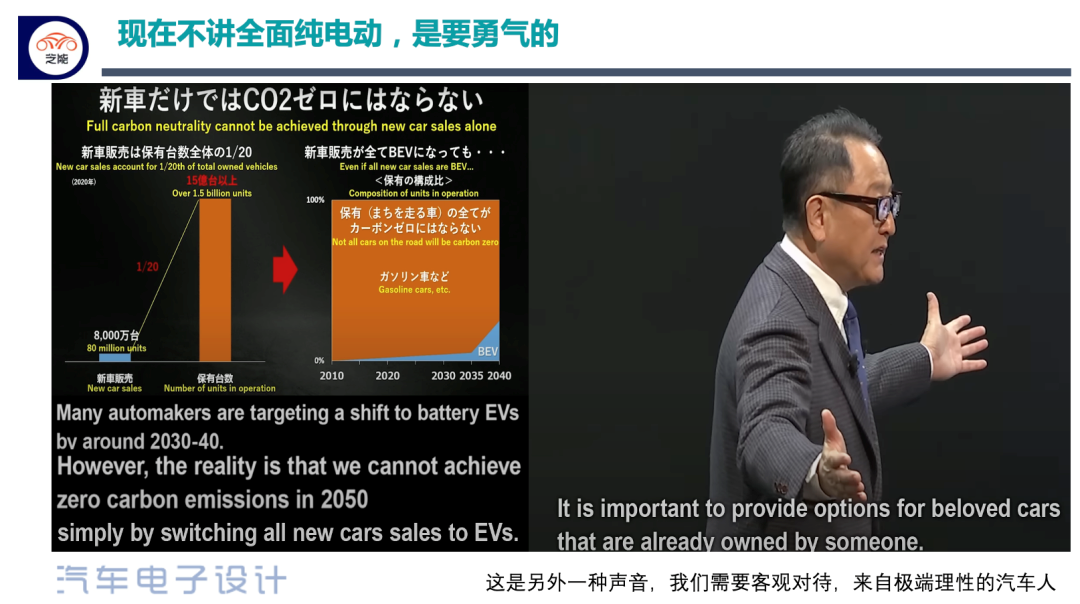
Toyota’s Global Electrification Overview
Toyota in Europe
Toyota’s total sales volume of electrified vehicles grew by 14% YoY to 718,608 units, accounting for 66% of total vehicle sales volume in Europe. However, there are differences among European countries. It is not solely up to car manufacturers to provide EV products, as society as a whole must contribute towards transitioning from internal combustion engine cars to EVs. Therefore, it can be challenging to sell slightly more expensive hybrid cars in Eastern Europe.

Breaking down the electrified vehicle models, it is true that Toyota’s problem lies in its high proportion of hybrids, with slow development in plug-in hybrids and pure EVs. Compared to any other car manufacturer in Europe, this quantity is not satisfactory. Hybrid vehicles account for as much as 95% of Toyota’s electrified vehicle sales in Europe, while what we consider to be new energy vehicles total only 35,000 units. While other automakers are heavily developing pure EVs in Europe, Toyota’s first generation of pure EVs overall performance was mediocre, and this is an undeniable fact. Without a strategic adjustment, Toyota will have a weak competitive advantage in this direction.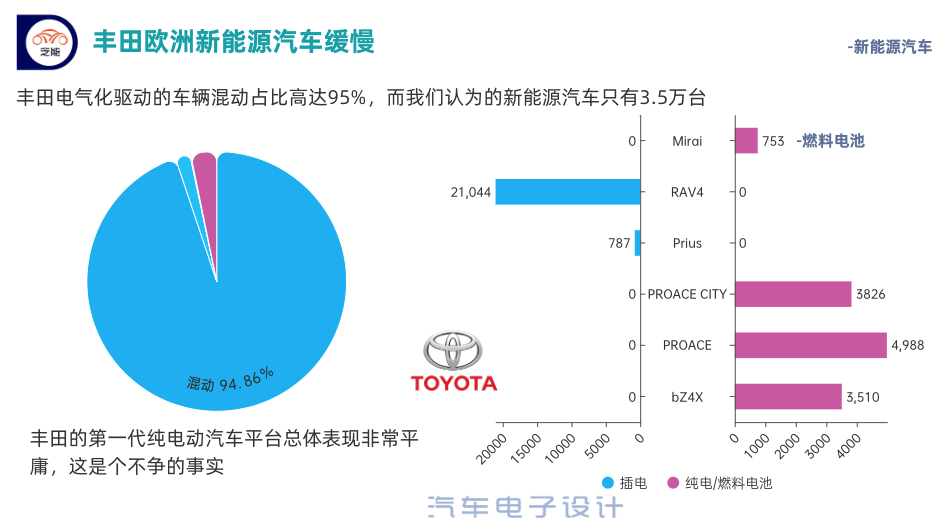
Toyota’s U.S. Market
In 2022, Toyota’s electric vehicle sales in the United States were 504,000 units, accounting for nearly 24% of total sales, a YoY decrease of 14%. Among the total increase of new energy vehicles in the U.S. market, Toyota’s electrification models suffered losses. Part of the increase in battery electric vehicles came from hybrid models. Toyota’s new energy vehicles in the United States totaled 40,000 units.
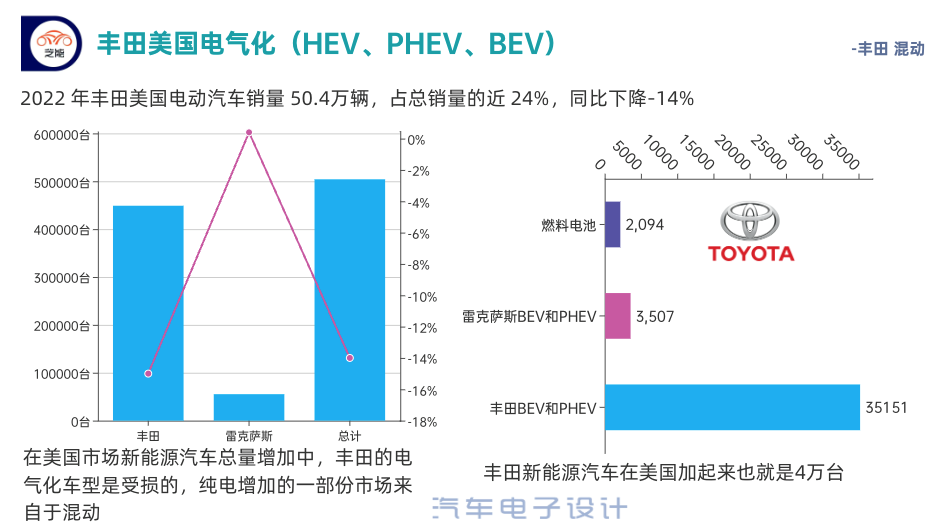
Among the 40,000 new energy vehicles of Toyota in the United States, the RAV4 and Prius models are the main contributors, with more than 91% of Toyota’s plug-in hybrid electric vehicles (PHEVs) . It can be said that Toyota’s pure electric models have not opened up the market globally.

Toyota’s Market in China
Now let’s talk about the situation of Toyota in the Chinese market, which totals less than 5,000 units for the whole TOYOTA group, mainly because of the late listing. Currently, the promotion rhythm of bZ4X has been disrupted in China, and it is estimated that Toyota will carry out a round of revision of its pure electric vehicle platform, with the focus on the infotainment and interior aspects.
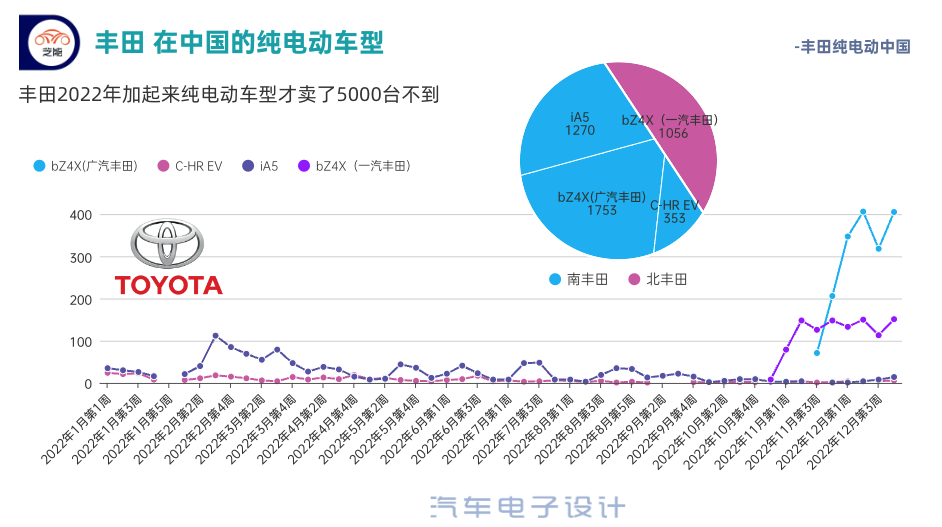
Future Outlook
What about Toyota’s next steps? Based on the current situation, we expect that Toyota will take two paths:- One option is to abandon the current e-TNGA architecture and use a brand new platform dedicated solely to electric vehicles to enhance Toyota’s competitiveness in the new pure electric vehicle market within the next 10 years.
- The other option is to improve the e-TNGA architecture using updated technology to increase the lifespan of this (rarely used) new platform.
The rumor currently circulating suggests that Toyota may opt for the former. This choice makes logical sense as Toyota faces similar challenges as Volkswagen Group. If the electric vehicle platform has too many considerations, the mass-produced car will be uncompetitive before it even goes to market. Therefore, for Toyota, it is crucial which pure electric product it will use to compete in the European (1 million), American (2 million) and Chinese (2 million) markets within the total of 5 million markets in the future. Existing hybrid products provide Toyota with ongoing cash flow, but they only buy Toyota enough time; how to promote the pure electric platform remains a challenge.
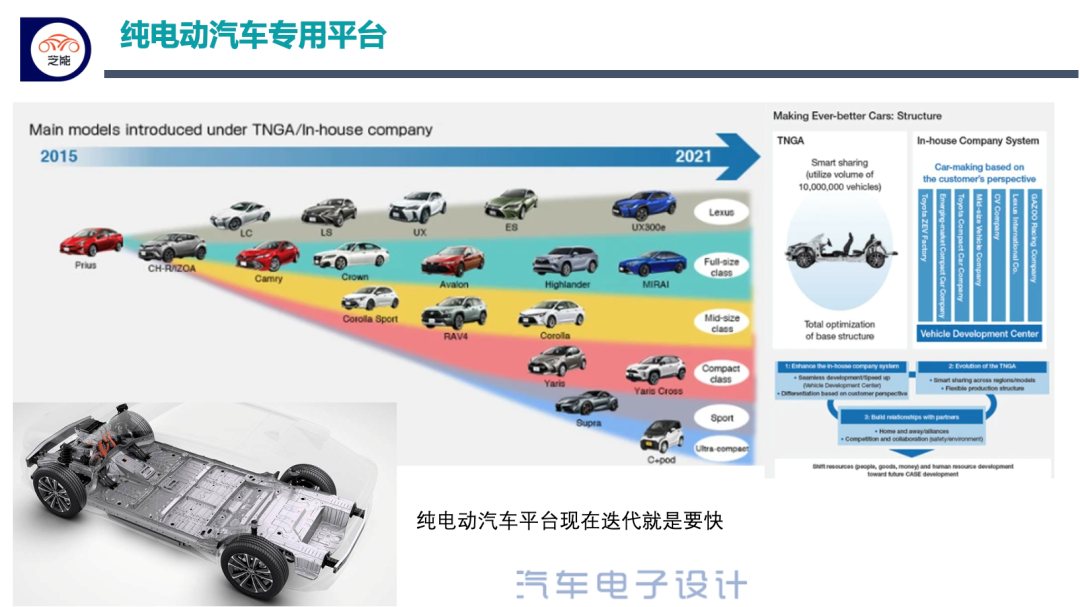
————————
Conclusion: We estimate that in the next two years, Japan will purchase and benchmark a large number of pure electric vehicles from China and draw inspiration from China’s development model in this field. Looking at the development of the automotive industry, there will be an exciting showdown in the next 5-10 years.
This article is a translation by ChatGPT of a Chinese report from 42HOW. If you have any questions about it, please email bd@42how.com.
